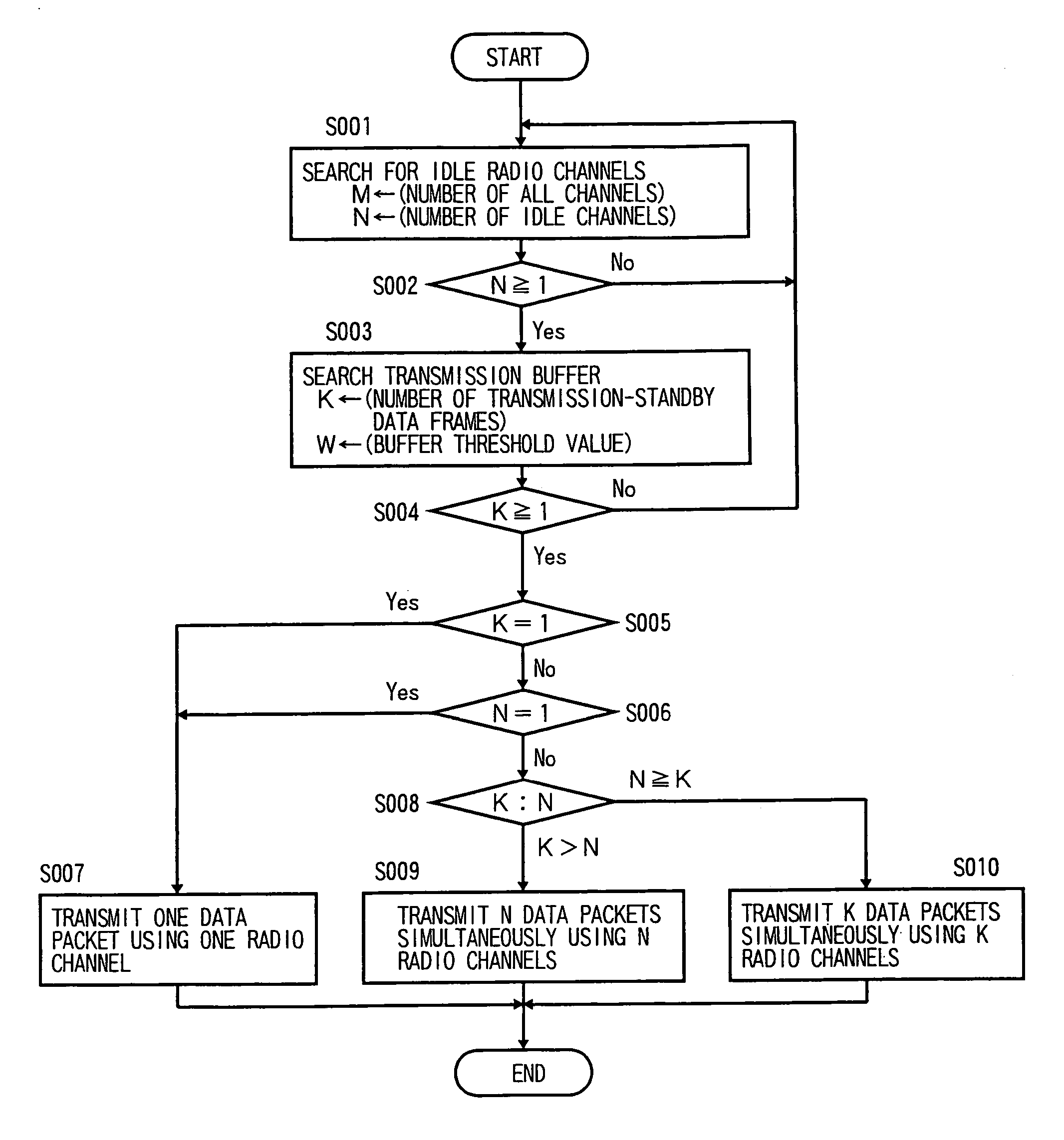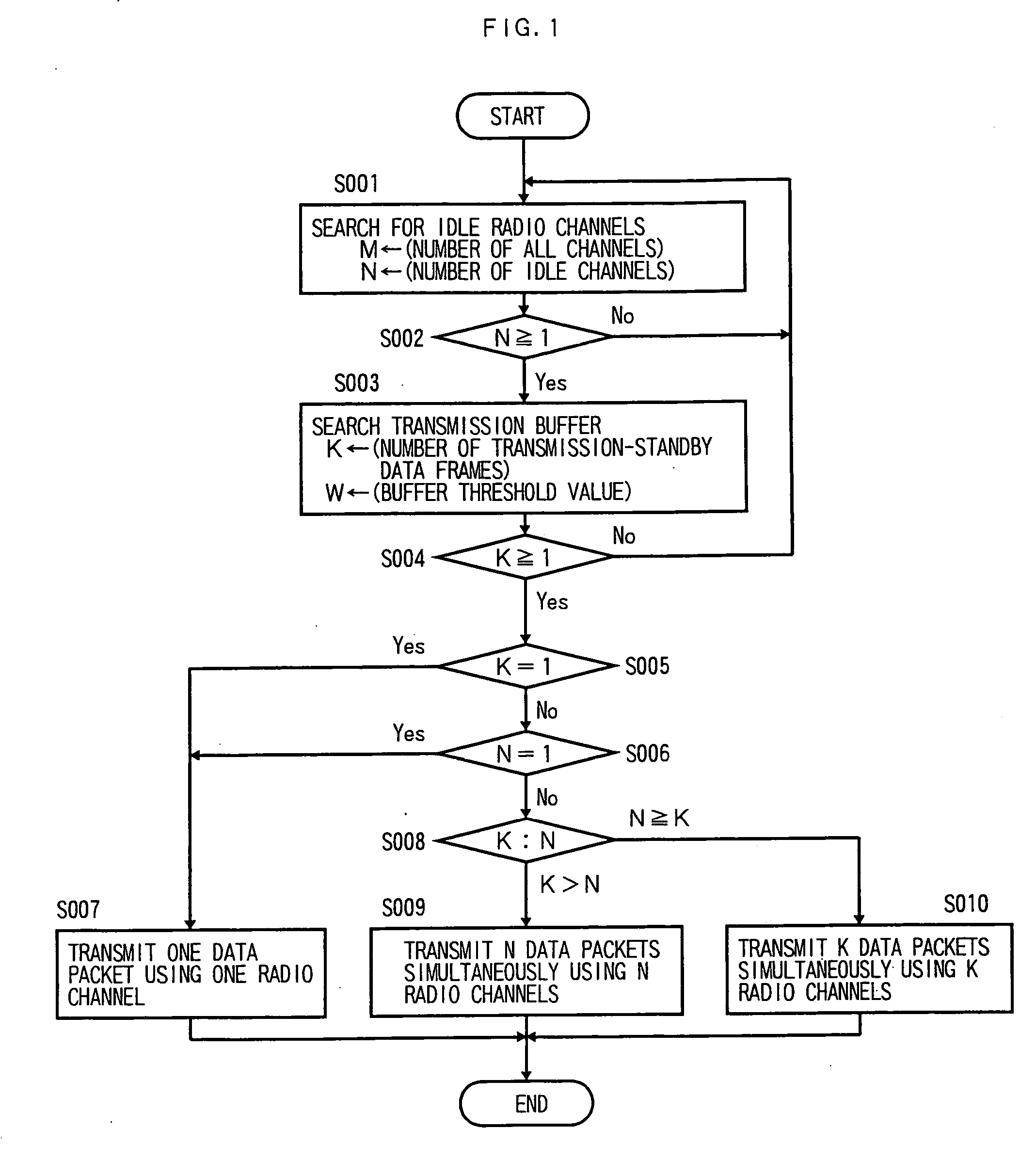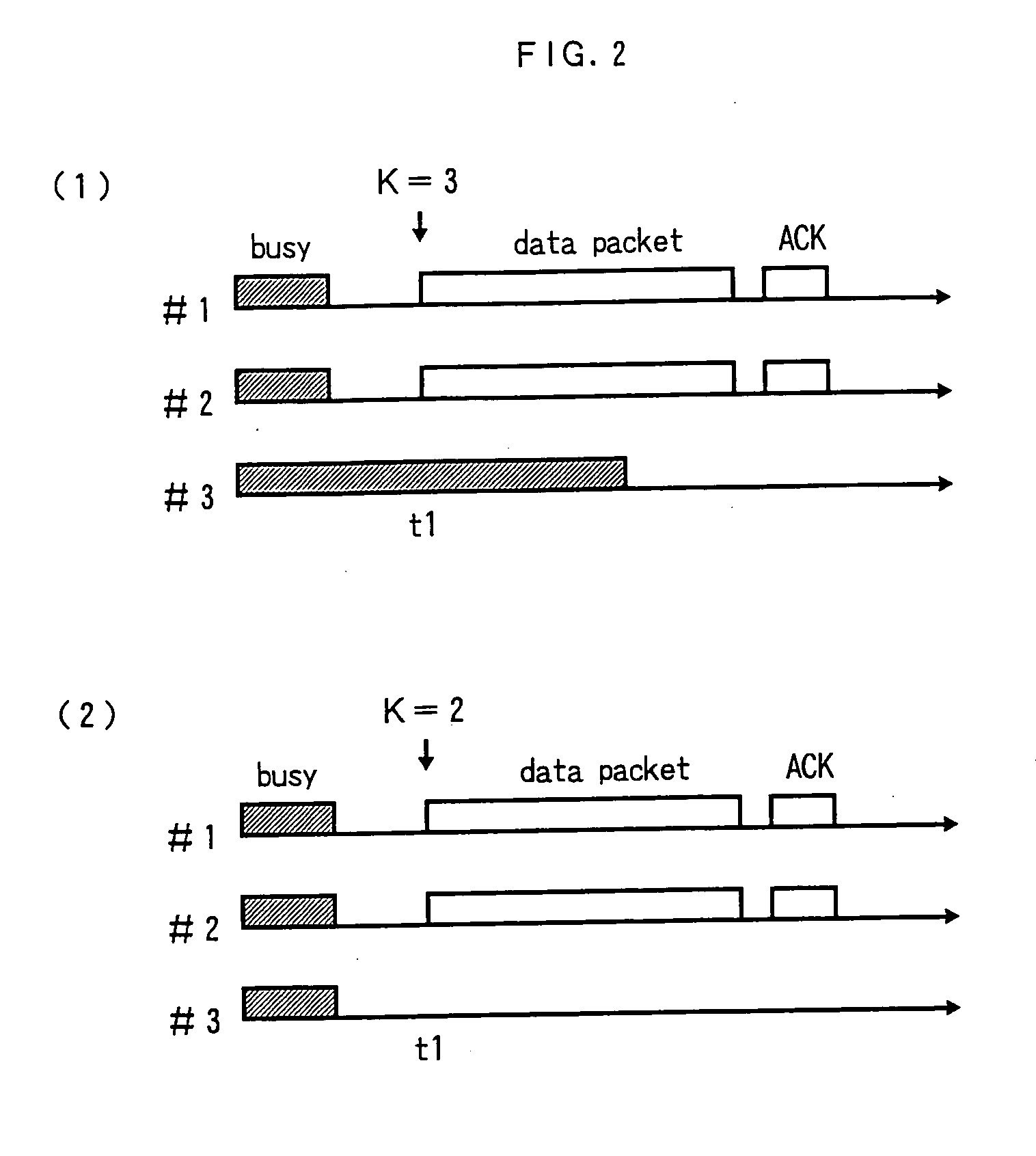Wireless packet communication method and wireless packet communication apparatus
a wireless packet communication and wireless packet technology, applied in the field of wireless packet communication methods and wireless packet communication apparatuses, can solve the problems of large influence of leakage power that leaks from the frequency range of one radio channel to that of another radio channel, difficult to increase throughput, and difficult to achieve the effect of increasing throughpu
- Summary
- Abstract
- Description
- Claims
- Application Information
AI Technical Summary
Benefits of technology
Problems solved by technology
Method used
Image
Examples
first embodiment
[0061]FIG. 1 is a flowchart showing a first embodiment of the present invention. FIG. 2 shows exemplary operations of the first embodiment of the invention. It is assumed here that radio channels #1, #2, and #3 are prepared between two STAs. The following description will be made with an assumption that transmission-standby data frames in a transmission buffer are to be transmitted between the two STAs and have the same destination.
[0062] Idle radio channels are searched for from all available radio channels by carrier sensing (S001). The number of all channels is represented by M and the number of detected idle channels is represented by N. If one or more idle radio channels are detected, the number K of transmission-standby data frames is acquired by searching the transmission buffer (S002, S003). If no transmission-standby data frame is detected (K=0), the process returns to the carrier sensing. If the number K of transmission-standby data frames is larger than or equal to 1, th...
second embodiment
[0068]FIG. 3 is a flowchart showing a second embodiment of the invention. FIG. 4 shows exemplary operations of the second embodiment of the invention. It is assumed here that radio channels #1, #2, and #3 are prepared between two STAs. The following description will be made with an assumption that transmission-standby data packets in a transmission buffer are to be transmitted between the two STAs and have the same destination.
[0069] An important feature of this embodiment, which differentiates this embodiment from the first embodiment, is to use MIMO. Idle radio channels are searched for from all available radio channels by carrier sensing (S001). The number of all channels is represented by M and the number of detected idle channels is represented by N. If one or more idle radio channels are detected, the sum of MIMO numbers of the respective radio channels is calculated as the number of simultaneous transmissions (S002, S101). For the sake of simplicity, the following descriptio...
third embodiment
[0076]FIG. 5 is a flowchart showing a third embodiment of the invention. FIG. 6 shows exemplary operations of the third embodiment of the invention. It is assumed here that radio channels #1, #2, and #3 are prepared between two STAs. The following description will be made with an assumption that transmission-standby data packets in a transmission buffer are to be transmitted between the two STAs.
[0077] An important feature of this embodiment, which differentiates this embodiment from the second embodiment, is to properly use plural radio channels and MIMO in accordance with the number N of idle channels, the MIMO number L, and the number K of transmission-standby data frames. More specifically, selection is made among a first mode in which a single radio channel is used and MIMO is not used, a second mode in which a single radio channel and MIMO are used, a third mode in which plural radio channels are used and MIMO is not used, and a fourth mode in which plural radio channels and ...
PUM
 Login to View More
Login to View More Abstract
Description
Claims
Application Information
 Login to View More
Login to View More - R&D
- Intellectual Property
- Life Sciences
- Materials
- Tech Scout
- Unparalleled Data Quality
- Higher Quality Content
- 60% Fewer Hallucinations
Browse by: Latest US Patents, China's latest patents, Technical Efficacy Thesaurus, Application Domain, Technology Topic, Popular Technical Reports.
© 2025 PatSnap. All rights reserved.Legal|Privacy policy|Modern Slavery Act Transparency Statement|Sitemap|About US| Contact US: help@patsnap.com



